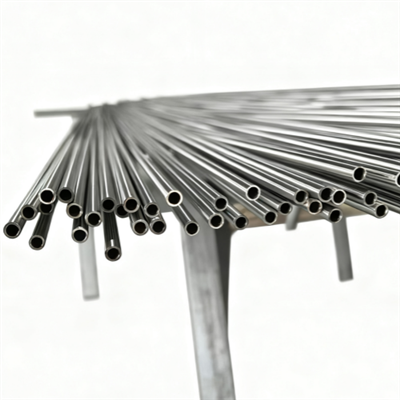Hey there! As a supplier of Inconel 601 pipes, I often get asked about the surface roughness requirements for these pipes. In this blog, I'm gonna break down what those requirements are, why they matter, and how they impact the performance of Inconel 601 pipes.
First off, let's talk a bit about Inconel 601. It's a nickel-chromium-iron alloy that's known for its excellent high-temperature strength, oxidation resistance, and carburization resistance. These properties make it a popular choice in a wide range of industries, including aerospace, chemical processing, and power generation.
Now, surface roughness is a measure of the texture of a surface. It's basically the irregularities on the surface of the pipe, and it's usually measured in micrometers (μm). The surface roughness of an Inconel 601 pipe can have a big impact on its performance and functionality.
Why Surface Roughness Matters
One of the main reasons surface roughness is important is its effect on corrosion resistance. A rough surface has more peaks and valleys, which can trap moisture and contaminants. Over time, these trapped substances can lead to corrosion, reducing the lifespan of the pipe. On the other hand, a smooth surface is less likely to trap contaminants, providing better corrosion resistance.


In addition to corrosion resistance, surface roughness can also affect the flow characteristics of fluids inside the pipe. A rough surface can cause turbulence in the fluid flow, increasing the pressure drop and reducing the efficiency of the system. This can lead to higher energy consumption and increased operating costs.
Surface Roughness Requirements
The surface roughness requirements for Inconel 601 pipes can vary depending on the specific application. For most general applications, a surface roughness of Ra 3.2 - 6.3 μm is considered acceptable. Ra is the arithmetic average of the absolute values of the surface height deviations from the mean line, measured within the sampling length.
However, in some applications where high precision and smoothness are required, such as in the aerospace industry, the surface roughness requirements can be much stricter. In these cases, a surface roughness of Ra 0.8 - 1.6 μm or even lower may be specified.
Measuring Surface Roughness
There are several methods for measuring the surface roughness of Inconel 601 pipes. One of the most common methods is using a profilometer. A profilometer is a device that measures the surface profile by tracing a stylus along the surface of the pipe. The stylus moves up and down as it encounters the peaks and valleys of the surface, and the device records these movements to calculate the surface roughness.
Another method is using optical measurement techniques, such as confocal microscopy or white light interferometry. These methods use light to measure the surface topography and can provide high-resolution measurements of the surface roughness.
Controlling Surface Roughness
As a supplier, we take several steps to control the surface roughness of our Inconel 601 pipes. During the manufacturing process, we use advanced machining techniques and high-quality cutting tools to ensure a smooth surface finish. We also perform regular quality checks using profilometers and other measurement devices to ensure that the surface roughness meets the specified requirements.
In addition to manufacturing processes, post-processing treatments can also be used to improve the surface roughness. For example, polishing can be used to reduce the surface roughness and create a smoother surface finish.
Comparison with Other Alloys
It's worth noting that the surface roughness requirements for Inconel 601 pipes are similar to those of other high-performance alloys. For example, Inconel 718 Tubing and Alloy 825 Pipe also have specific surface roughness requirements based on their applications. Similarly, Hastelloy C276 Pipe requires a certain level of surface smoothness to ensure optimal performance.
Conclusion
In conclusion, surface roughness is an important factor to consider when it comes to Inconel 601 pipes. The right surface roughness can enhance corrosion resistance, improve fluid flow characteristics, and extend the lifespan of the pipe. As a supplier, we're committed to providing high-quality Inconel 601 pipes that meet the specific surface roughness requirements of our customers.
If you're in the market for Inconel 601 pipes or have any questions about surface roughness requirements, feel free to reach out. We'd be more than happy to discuss your needs and provide you with the best solutions.
References
- ASME B36.19M - Welded and Seamless Austenitic Stainless Steel Pipe
- ASTM A269 - Standard Specification for Seamless and Welded Austenitic Stainless Steel Tubing for General Service
- ISO 4287 - Geometrical Product Specifications (GPS) - Surface texture: Profile method - Terms, definitions and surface texture parameters





